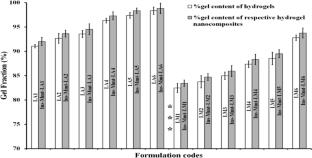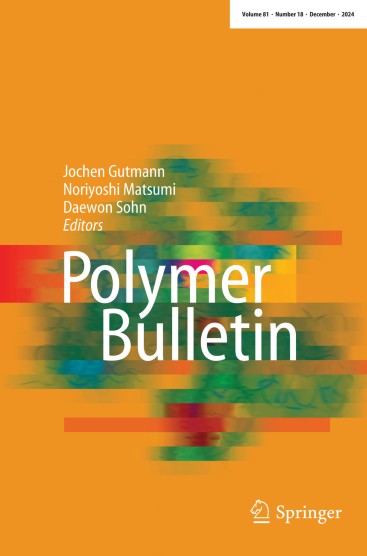Linseed-based hydrogel nanocomposites for pH-responsive and controlled insulin delivery: design, characterization, and in vitro kinetic analysis
Abstract
This study presents the design, development, and characterization of pH-responsive hydrogels and hydrogel nanocomposites (HNCs) tailored for the safe oral delivery of insulin. A number of formulations of the aforementioned networks were developed utilizing acrylic acid and methacrylic acid (monomers) and a crosslinker in variable amounts. Swelling investigations confirmed minimal expansion at acidic pH (1.2) and significant swelling at physiological pH (7.4), aligning with controlled insulin release in the intestinal environment. Concentration variations of monomers and crosslinkers influenced swelling (89.45–98.5%), gel fraction (82.47–98.34%), and loading efficiency (69.98–97.63%). Fourier transform infrared spectroscopy (FTIR) validated the successful formation of grafts and safe loading of insulin. Morphological analysis using scanning electron microscopy (SEM) revealed that surface variations were influenced by the inclusion of Ins-Mmt nanoclay. X-ray diffraction (PXRD) studies indicated that the optimized formulation retains the physical form of insulin. Thermal investigations (DSC and TGA) demonstrated enhanced thermal stability in the case of HNCs. Energy-dispersive X-ray spectroscopy (EDX) confirmed the effective incorporation of the insulin–montmorillonite nanoclay (Ins-Mmt) complex within the hydrogel. Release studies indicated controlled and pH-responsive insulin release (72.52–94.52%, up to 24 h), with kinetic modeling fitting the Korsmeyer–Peppas model, suggesting non-Fickian diffusion. Based on the release kinetics, the Ins-Mmt complex containing linseed and acrylic acid-based hydrogel formulation (Ins-Mmt-LA6) was considered the optimized formulation. This comprehensive characterization establishes the potential of these formulations for pH-responsive and safe oral insulin delivery, offering insights for future advancements in controlled drug release systems.


 求助内容:
求助内容: 应助结果提醒方式:
应助结果提醒方式:


